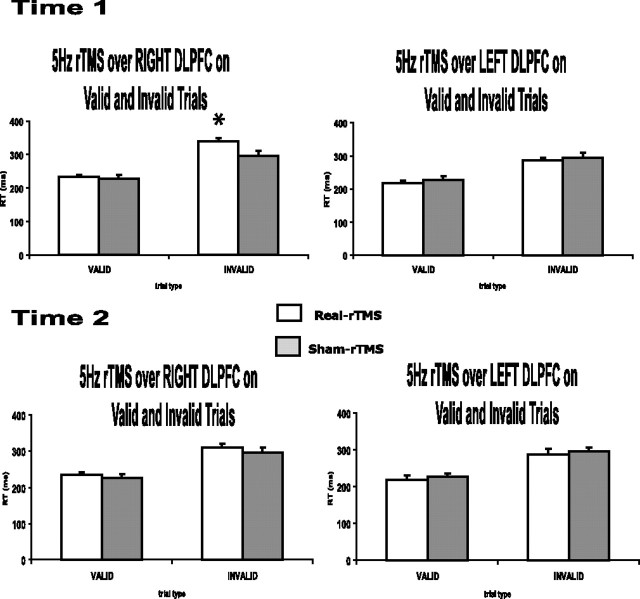Figure 9.
Behavioral study: behavioral effects of cue type and conditioning of DLPFC on RTs. At time 1, 5 Hz rTMS conditioning over the right DLPFC led to a significant increase in RTs in invalidly cued trials (338 ± 17 ms) compared with sham (295 ± 15 ms). This was not the case for left DLPFC conditioning (RTs in invalid trials: 285 ± 10 ms for real-rTMS; 297 ± 12 ms for sham). At time 2, 5 Hz rTMS conditioning did not lead to any significant changes in RTs in either valid or invalid trials whether applied over the left or right DLPFC. Note that RTs, pooled across all levels of stimulation type, stimulation site, and hand response, averaged over time 1 and time 2, were significantly slower (303 ± 16 ms) in invalidly cued trials than in validly cued trials (227 ± 10 ms). *p = 0.015.

